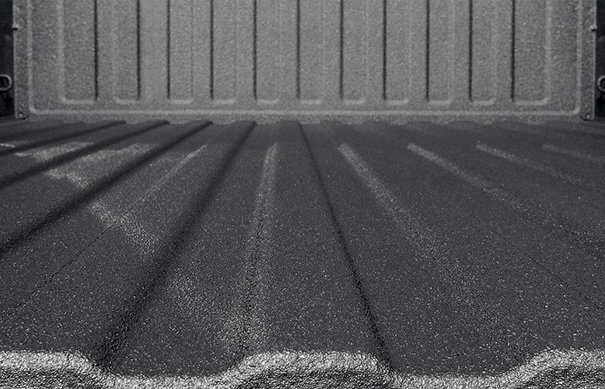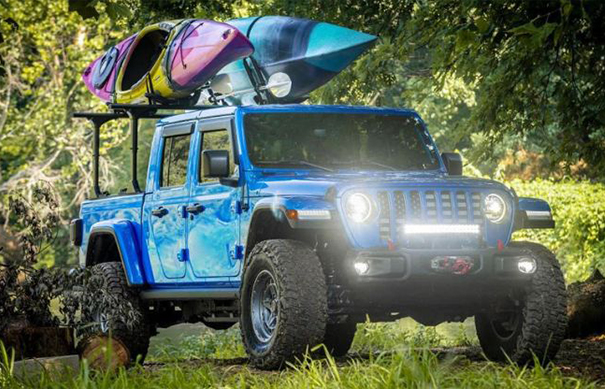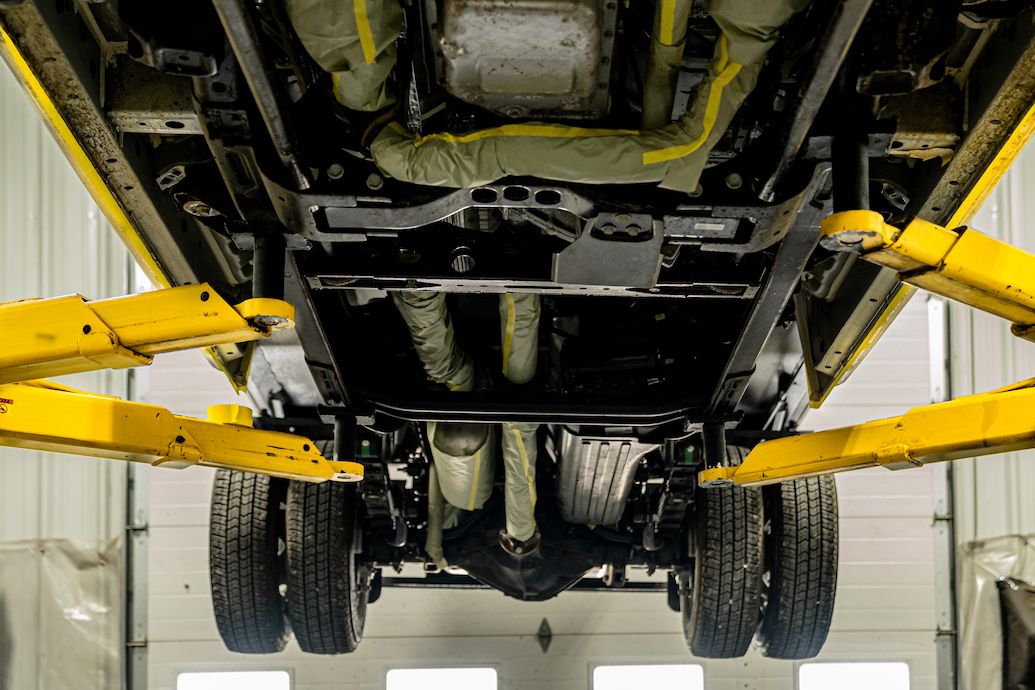Truck owners in the rust belt often spray their truck’s undercarriage with an undercoating product to prevent rust – which forms so easily driving on salt-treated winter roads.
There are many different types of products out there, and all of them have their pros and cons. One thing every product has in common is areas where they don’t belong.
Before you undercoat your truck, learn what areas you shouldn’t spray, from the experts at LINE-X®.
Undercoating your truck is a serious undertaking. If you’d rather let the experts handle it, reach out to your local LINE- dealer for professional undercoating services. We use a specialized asphalt-based undercoating formulated to prevent rust. Wondering how much it’s going to cost you? We cover that in our blog on how much undercoating costs.
7 Areas Not to Spray When Undercoating a Truck
Asphalt-based, waxed-based, lanolin-based – there are many types of rust-inhibiting undercoatings so always read the instructions from the manufacturer. But no matter what you use, to avoid disasters large and small, always make sure the coating doesn’t end up in these specific areas on your truck. Since there are so many different types of undercoating products, always consult with the manufacture for best application procedures.
- Brakes: For obvious reasons, you should not spray any undercoating on your brakes. For drum brakes, you can spray the backing plates but be careful that no product goes past it. Disc brakes and calipers should be covered to prevent any product from contaminating them.
- Exhaust, engine: Anything that gets hot, like an exhaust pipe or the engine, should not be sprayed with undercoating. If you do accidentally spray some undercoating on these areas, just be sure not to inhale any of the fumes when they get hot.
- Rubber: Some undercoating products cause non-oil-resistant rubber to swell. If you have this type of rubber on any of your body mounts, engine mounts, CV boots, suspension bushing, or elsewhere, make sure not to spray them.
- Sensors and cameras: Most newer trucks have advanced driver-assistance systems (ADAS). If yours does, avoid spraying (and ruining) cameras and sensors that may be mounted around the undercarriage.
- Driveshaft: Some undercoating products are applied as a thick, gooey paste. If this is the case, don’t apply any to the driveshaft, or you could end up with a vibration.
- Tires: We know you know that rubber doesn’t rust. However, it’s easy for overspray to collect on tires, which can result in slippery tires or a gooey mess to clean up. To prevent this, remove the wheels before applying undercoating.
- Suspension components: Some oil- or waxed-based undercoatings can be applied to suspension components. However, other products that are very thick could prevent these systems from working properly. Always consult the manufacturer’s instructions to be sure.
Professional Undercoating Near Me
Setting aside a weekend to undercoat your truck is a commitment. If you’d rather let the experts protect the undercarriage of your truck from rust, reach out to your local LINE-X dealer. We’ll take the time to mask off areas that shouldn’t be undercoated and make sure the rustproofing product gets into every nook and cranny of your truck so rust doesn’t form.



 English
English
 French Canadian
French Canadian





